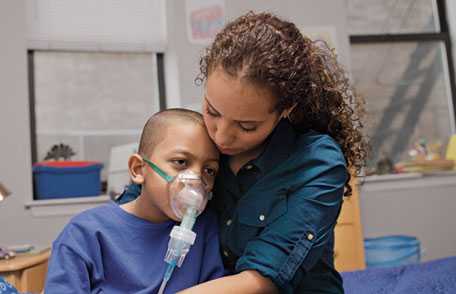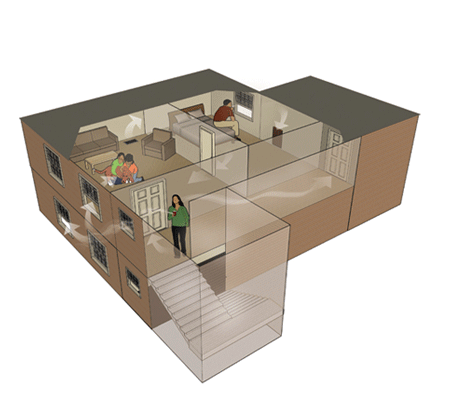Second Hand Smoke: Danger!
 Make your home and vehicles smokefree for cleaner air and a healthier heart and lungs.
Make your home and vehicles smokefree for cleaner air and a healthier heart and lungs.
More than 58 million nonsmokers in the United States are still exposed to secondhand smoke, even though cigarette smoking rates are dropping and many states prohibit smoking in public places such as worksites, restaurants, and bars. In all, about 1 of every 4 nonsmokers is exposed to the dangerous chemicals in secondhand smoke.
Young children and African-Americans are more likely to be exposed to secondhand smoke than many other population groups.
- 2 in 5 children (aged 3 to 11 years), including 7 in 10 Black children (aged 3 to 11 years), are exposed, as are
- Nearly half of all Black nonsmokers.
Breathing secondhand smoke is also more common for renters and people at lower income levels, including:
- 2 in 5 people who live in poverty
- More than 1 in 3 people who live in rental housing
Secondhand smoke exposure occurs when nonsmokers breathe in tobacco smoke exhaled by smokers or when they breathe the smoke from burning tobacco products. The Environmental Protection Agency has classified secondhand smoke as a Group A carcinogen—an agent that is known to cause cancer in humans—and the Surgeon General has concluded that there is no safe level of exposure to secondhand smoke.
Secondhand smoke contains dangerous chemicals that can damage the lungs and heart. It is known to cause heart disease and cancer in adult nonsmokers, and even brief exposure can trigger a heart attack or stroke. Secondhand smoke can also cause sudden infant death syndrome (SIDS), respiratory infections, ear infections, and asthma attacks in infants and children. Every year, exposure to secondhand smoke causes:
- 41,000 adult nonsmokers to die from heart disease or lung cancer
- 400 infants to die from SIDS
Nathan, a lifetime nonsmoker who participated in CDC's Tips From Former Smokers campaign, died at age 54 after years of secondhand smoke exposure where he worked. More than two and a half million nonsmokers have died from exposure to secondhand smoke since 1964.
Smokefree Laws Save Lives, But Many Not Protected
In the last 25 years, 700 cities and 26 states plus the District of Columbia have passed comprehensive laws to protect nonsmokers by prohibiting smoking in indoor workplaces, restaurants, and bars. These local and state laws currently cover about half of the U.S. population and have helped reduce the number of people who are exposed to secondhand smoke.

In buildings without restrictions, smoke from common areas or other units where smoking occurs can seep into smokefree units!
Home Exposure Still a Problem
Even though more than 4 of every 5 households in the United States have adopted smokefree rules, secondhand smoke exposure in the home is still a serious problem. The home remains the major source of secondhand smoke exposure for children. The Surgeon General has indicated that making indoor spaces smokefree is the only way to provide nonsmokers with complete protection from secondhand smoke.
Limiting smoking to specific rooms, opening a window, or using air fresheners or fans is not enough to fully protect individuals in the home, including those who live in multiunit housing such as apartments, condos, and government-funded housing. Many people who live in public housing are especially affected by secondhand smoke, including the elderly, children, and people with disabilities. A few cities have passed laws restricting smoking in multiunit housing and several hundred housing authorities have adopted smokefree policies. However, in buildings without restrictions, smoke from common areas or other units where smoking occurs can seep into smokefree units.
What's the Solution?
There are many ways to protect people from secondhand smoke exposure.
Parents can ensure their homes and vehicles are smokefree and keep their children away from public places where smoking is allowed. In this video, Jessica, another participant in the Tips From Former Smokers campaign, advises parents on protecting their children from secondhand smoke exposure.
Housing authorities and landlords can make their properties—especially multiunit buildings—smokefree to protect the health of all residents. For example, all 20 public housing authorities in Maine have made their buildings smokefree.
Cities and states can pass smokefree laws to protect nonsmokers in all indoor workplaces, restaurants, bars, and casinos, and can work to increase availability of smokefree multiunit housing. In California, 15 counties and cities [707KB] have passed ordinances restricting smoking in multiunit housing.
By working together, individuals and communities can eliminate the serious health hazards for nonsmokers that can result from exposure to secondhand smoke.
- Page last reviewed: February 3, 2015
- Page last updated: February 3, 2015
- Content source:
- National Center for Chronic Disease Prevention and Health Promotion, Office on Smoking and Health
- Page maintained by: Office of the Associate Director for Communication, Digital Media Branch, Division of Public Affairs




 ShareCompartir
ShareCompartir